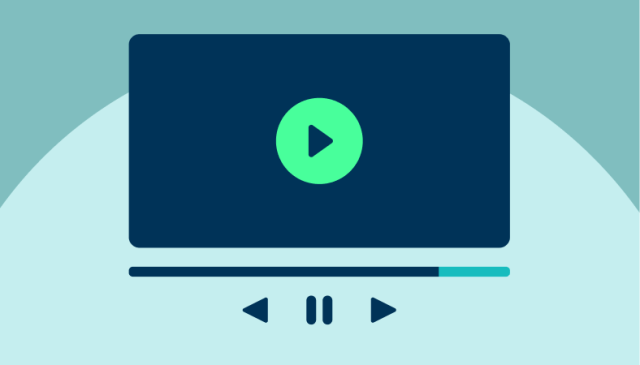4 Ways a healthcare computerized maintenance management system (CMMS) can improve hospital operations & patient care
Imagine if patients saw how many zeroes it takes to run a safe and compliant hospital. Better have a crash cart ready.
A staggering number of hospitals sacrifice some level of compliance to cut costs. It doesn’t have to be this way.
Shifting maintenance management into a computerized system can transform hospital operations and improve patient care, lowering expenses and optimizing budgets in the process.
What is a Healthcare CMMS?
A Healthcare Computerized Maintenance Management System (CMMS) is a software system that streamlines the maintenance of healthcare equipment and facilities. It safeguards critical assets so that they are ready when patients need them, and even tracks the maintenance schedule for devices already used by patients.
A CMMS automatically distributes work orders on schedule, enabling proper maintenance at all times. It also acts as a centralized database, corralling all standard operating procedures (SOPs), purchase dates, warranties, manufacturing recommendations and repair history easily searchable.
How does using a Healthcare CMMS help improve hospital operations?
A Healthcare CMMS can improve hospital operations in four key categories: safety and compliance, operations efficiency, data visibility and budget.
1. Improve hospital safety & compliance
Out of all the benefits a healthcare CMMS offers, simplified compliance is the most impactful. Regulations are ever-changing, as are requirements for Environment of Care sites. Not only can violating these regulations result in fines and lawsuits– it can endanger patient lives.
Equipment must be well-maintained according to all relevant requirements. A CMMS catalogs the status and repair schedules for all critical assets, alerting relevant stakeholders when action must be taken. When the time comes for audits and inspections, users can easily retrieve data via organized reports in the CMMS or healthcare compliance software.
Automated quality inspections
A CMMS automatically surveys workflows, detects quality issues and distributes work orders when problems are detected. This streamlines maintenance workflows while creating a safe environment to improve patient care.
Scheduled preventive maintenance
Users can schedule preventive maintenance within the CMMS or healthcare maintenance software automatically according to Joint Commission and DNV requirements, internal policies, contract agreements, etc. Automating preventive maintenance schedules ensures constant safety and compliance, uninterrupted by avoidable downtime or risk.
Audit preparation
Brightly’s cloud-based CMMS utilizes mobile-first technology, allowing users to deliver, perform and document their work on the go. Data is captured and stored in real-time, allowing easy mobile access to reports anytime, anywhere. Users can customize the CMMS to share automated reports on a regular cadence or pull them instantly for auditing purposes.
2. Streamline operations & boost efficiency
While poor communication is a threat to all organizations, it’s especially dangerous within hospital walls, where a missed work order can be fatal.
Siloed operational solutions working in tandem are not seamless. Marrying them is up to the user, which risks human error.
Because every component of a CMMS is designed to work cohesively, it leads to streamlined operations all around. That means more efficiency and fewer communication breakdowns.
Centralize hospital documents & data
A CMMS stores every important document necessary to run a healthcare organization in a centralized, cloud-based location. HTM, HFM, supply chain and IT information are consolidated into the platform, making data accessible to all relevant departments.
Reduce human error
Spreadsheets and siloed applications increase the risk of human error. Inconsistencies lead to an unoptimized workflow that could place patients at risk. Because CMMS solutions utilize automation, they significantly lower the potential for human error, safeguarding quality patient care.
Focus on what matters most
Without the need to manage spreadsheets, physical documents, supplies, workflows and maintenance work orders manually, hospital staff can narrow their focus to patient needs alone. A CMMS makes this possible by automating and optimizing all operational processes.
Efficient maintenance planning also decreases downtime, maximizing the amount of time available to improve patient care even further.
3. Enhance data visibility
Hospitals run on data. Work order status, asset inventory, performance, etc. – all this data is required to assess efficiency, communicate needs, optimize operations and so much more. Data facilitates smooth hospital operations while maintaining patient safety and well-being.
When staff spend valuable time hunting for data tucked away in siloed operations and scattered spreadsheets, they sacrifice efficiency. Work orders are forgotten, assets are lost, and staff are forced to make uninformed decisions that place patients at risk.
TheWorxHub unites data in an easy-to-read dashboard, bypassing this issue altogether. Staff can find the information they need in just a few clicks. All departments can access this data at any time, which improves the organization’s overall efficiency.
Manage assets & equipment
Imagine being able to access real-time data for every hospital asset in one place, with just a few clicks. That's what a modern healthcare CMMS asset management tools do.
With TheWorxHub, users can add barcodes to assets and map preventive work and individual assets to The Joint Commission, life safety and NFPA standards. For each asset, users can see detailed maintenance requirements, work order status, location and more.
Track employee performance
A healthcare CMMS doesn’t stop at tracking hospital assets– it can also provide an in-depth analysis of staff performance. The system shows how long employees take to perform certain tasks, as well as the details surrounding accidents that occur.
These insights empower the hospital to make decisions that optimize employee efficiency by highlighting training or skills gaps, and situations where future accidents might occur.
4. Maximize budgets
In addition to helping hospitals improve efficiency over time, the data visibility a healthcare CMMS solution's data visibility enables organizations to track financial expenditures and employee time. This highlights budget pitfalls and helps determine what reallocations are required to optimize the hospital budget.
Optimize employee work time
Eliminating manual processes like data entry and maintenance scheduling reduces the number of employee hours necessary to maintain compliance. Implementing a healthcare CMMS means the time and money spent tracing assets, scheduling work orders and updating status can be redirected to more impactful tasks.
Leverage detailed cost information
In addition to tracking financial expenditures, a CMMS automatically creates budget reports detailing how much the hospital spends on maintenance, labor and parts. Visualizing how much each department actually spends on these needs informs future budgeting decisions. The hospital can optimize spending across all departments, eliminating waste while ensuring departments have what they need to thrive.
How can I implement a Healthcare CMMS within my organization?
Here are seven easy-to-follow steps for successful healthcare CMMS implementation:
Choose the right CMMS software
The first step to implementing a Healthcare CMMS is finding the solution that fits your needs. This will likely be a maintenance software designed specifically for the healthcare industry, like TheWorxHub.
An effective healthcare CMMS solution should unite maintenance tasks, assets and compliance, creating a transparent, simplified path toward managing maintenance and supporting patient care.
TheWorxHub accomplishes this (and a whole lot more) through the following features:
- Cloud-based, centralized data source
- Preventive maintenance scheduling function
- Built-in references to The Joint Commission and DNV
- Asset management feature with mobile access
- Dashboard providing quick access to work order status, asset inventory, industry benchmarks and site performance
- Space management functionality with life safety drawings
- Automated quality inspections
- Automated work orders
Take inventory
The next step is to take inventory of all assets within the organization. All vehicles, machines, buildings, etc. need to be uploaded into the CMMS. This is an important step, as accurate uploading leads to accurate inventory numbers, vendor costs and CMMS processes down the line.
Create a maintenance schedule
Create a maintenance schedule for the CMMS to minimize the interference of operations. Regularly scheduled maintenance ensures the software remains up to date, optimized and safe from software failure.
Communicate with the IT department
A CMMS requires a compatible network to perform correctly. The organization’s IT department will need to test and confirm that its network can support the impending CMMS implementation.
Test the software
To ensure a smooth transition, install the software and do a test run to sort out potential problems before the CMMS is fully implemented.
Educate yourself and others on the Healthcare CMMS
If you’ve ever helped an elderly loved one operate a smartphone, you know how possible it is to use software to its absolute minimum potential. A CMMS will seem just as foreign to some staff members as texting is to their grandparents. For the sake of an efficient workflow, any employee who interacts with the software should be educated on how it works.
Keep your CMMS up-to-date
Keeping your CMMS up-to-date is essential to ensuring work processes are as optimized as possible. Check that new assets are entered correctly, and old assets are retired within the system. The most optimized version is always the most efficient.
How TheWorxHub can help
Ready to give a healthcare CMMS a try? TheWorxHub is an intuitive platform that has everything you need to transform hospital operations for the better. Learn more by requesting a free demo tailored to your organization's needs.



